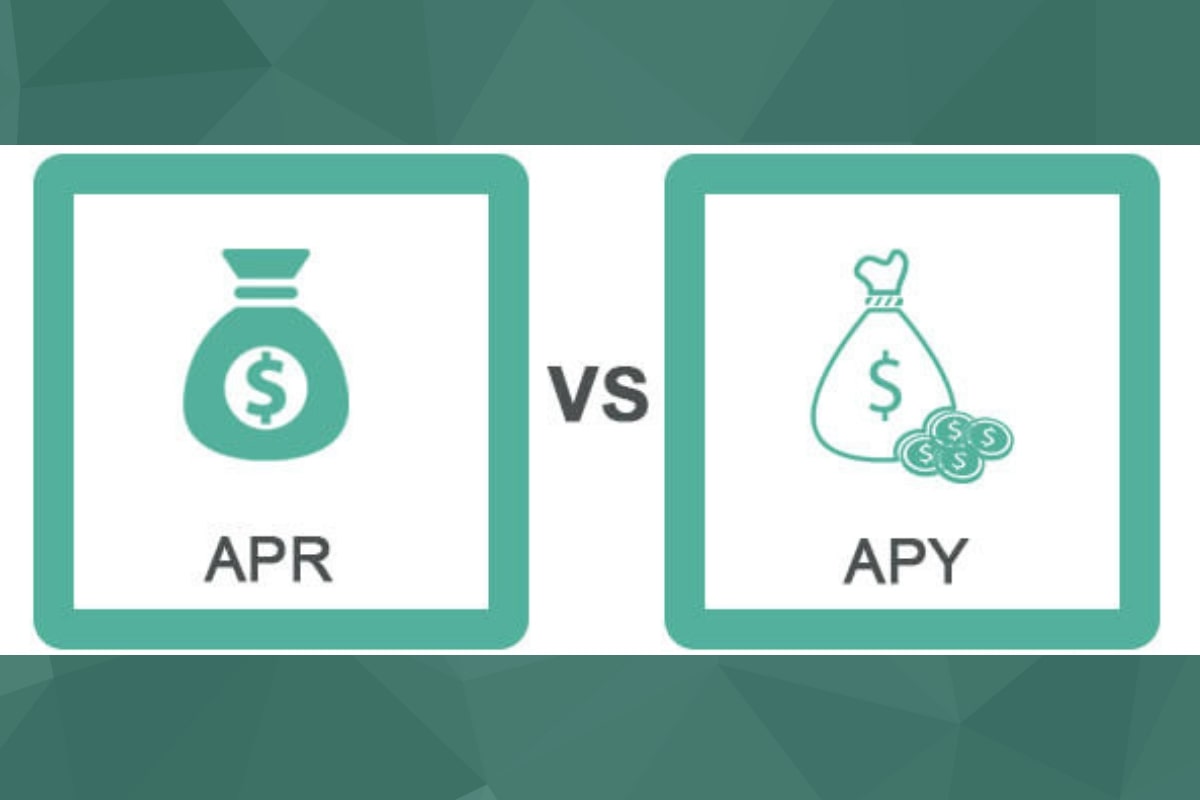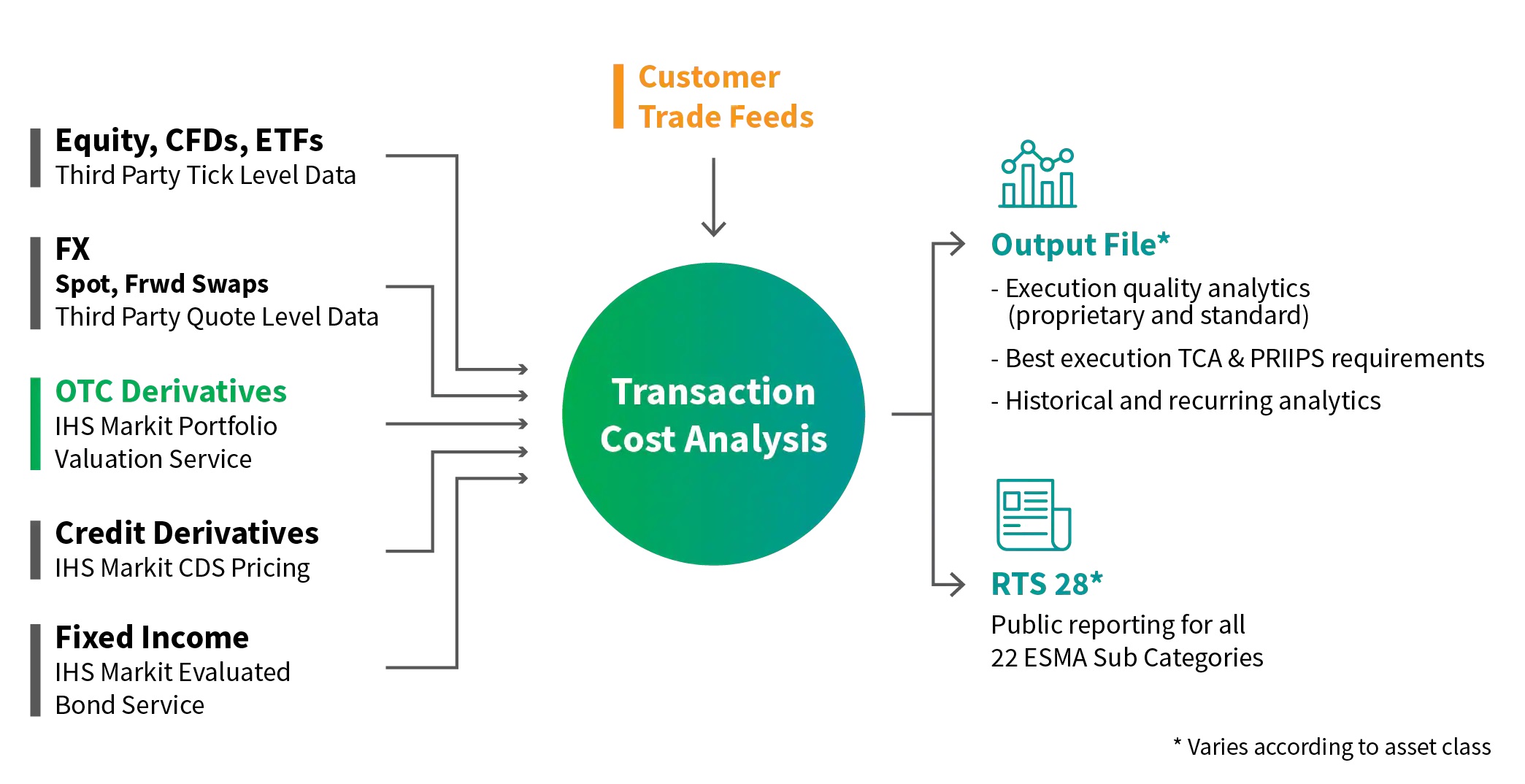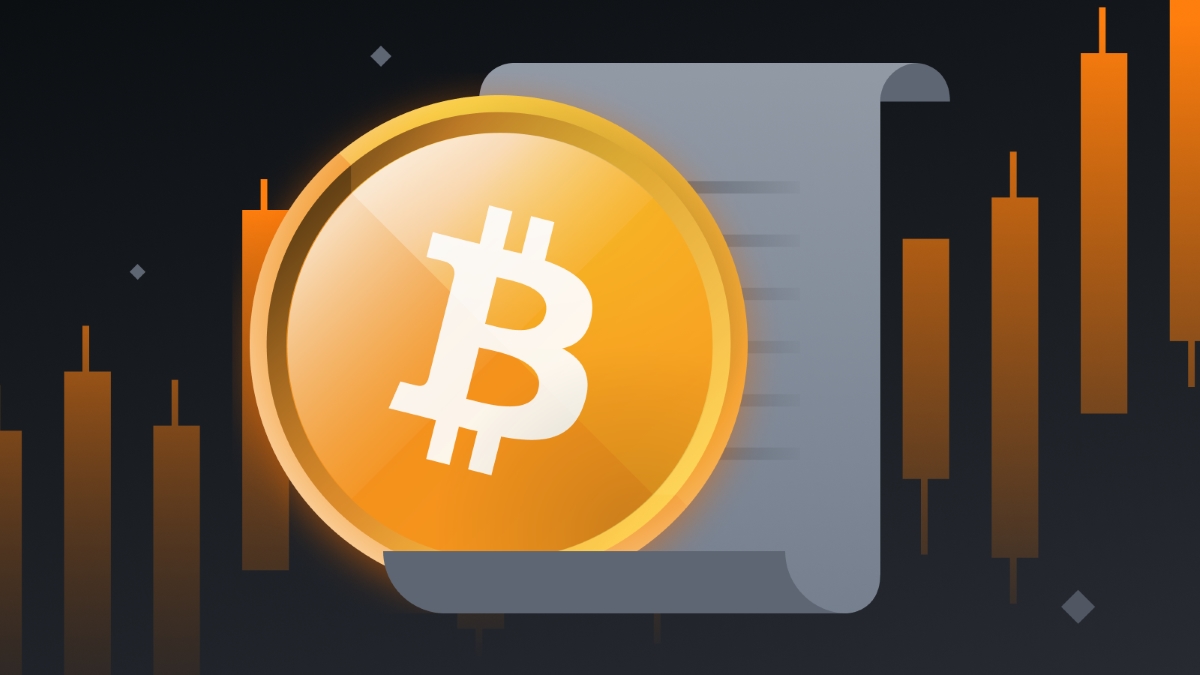

Finance
What Are Crypto Derivatives
Modified: February 21, 2024
Discover the world of crypto derivatives and their role in finance. Learn how these innovative financial instruments can amplify your investment opportunities.
(Many of the links in this article redirect to a specific reviewed product. Your purchase of these products through affiliate links helps to generate commission for LiveWell, at no extra cost. Learn more)
Table of Contents
Introduction
The world of finance has evolved significantly in recent years, with the rise of digital currencies becoming a major force to reckon with. Among the various aspects of the crypto market, crypto derivatives have garnered significant attention. Cryptocurrency derivatives enable traders and investors to participate in the crypto market without directly owning the underlying asset.
In simple terms, crypto derivatives are financial contracts between parties that derive their value from an underlying cryptocurrency. These derivatives allow market participants to speculate on the price movements of cryptocurrencies without actually owning them. The use of derivatives in the crypto space has opened up a whole new realm of trading opportunities and has attracted a diverse range of investors, from individuals to institutional players.
The popularity of crypto derivatives can be attributed to several factors, including the potential for amplified returns, exposure to a wide range of cryptocurrencies, and the ability to hedge against price fluctuations. However, it is essential to understand both the benefits and risks associated with these financial instruments.
In this article, we will delve into the world of crypto derivatives, exploring their different types, benefits, risks, regulations, and the overall market outlook. Whether you are a seasoned investor or curious about the crypto space, understanding these derivatives is crucial in navigating the evolving financial landscape.
Definition of Crypto Derivatives
Crypto derivatives are financial instruments that derive their value from an underlying cryptocurrency. They are contracts between two or more parties, where the value of the derivative depends on the price fluctuations of the underlying crypto asset. These derivative contracts allow investors to speculate on the future price movements of cryptocurrencies without owning the actual assets.
There are various types of crypto derivatives, including futures, options, swaps, and perpetual contracts. Each type has its own unique characteristics and purposes. For example, futures contracts enable traders to buy or sell an underlying cryptocurrency at a predetermined price and date in the future. Options give the holder the right, but not the obligation, to buy or sell the underlying cryptocurrency at a specified price within a set timeframe. Swaps involve the exchange of one cryptocurrency for another, either at an agreed-upon price or based on future market prices.
The value of a crypto derivative is derived from the price movements of the underlying cryptocurrency. As the price of the underlying asset changes, the value of the derivative contract also changes. Traders and investors can profit from accurately predicting the future direction of the cryptocurrency market.
One of the key features of crypto derivatives is leverage. Leverage allows traders to control a larger position in the market with a smaller initial investment. For example, with 10x leverage, a trader can control $10,000 worth of a cryptocurrency with just $1,000 of their own capital. This amplifies both potential profits and losses, making derivatives a high-risk, high-reward investment.
Overall, crypto derivatives provide market participants with the ability to gain exposure to the crypto market and potentially profit from price movements, without the need to directly own the underlying assets. These financial instruments have gained popularity due to their flexibility, liquidity, and potential for substantial returns.
Types of Crypto Derivatives
The world of crypto derivatives offers a diverse range of instruments that cater to the specific needs and preferences of investors. Here are some of the most common types of crypto derivatives:
- Futures Contracts: Crypto futures contracts enable traders to buy or sell an underlying cryptocurrency at a predetermined price and date in the future. These contracts provide investors with the ability to speculate on the price movement of cryptocurrencies and can be settled in cash or the underlying asset itself.
- Options Contracts: Options give the holder the right, but not the obligation, to buy or sell the underlying cryptocurrency at a specified price within a set timeframe. Call options allow investors to buy the asset, while put options enable them to sell the asset. Options provide traders with flexibility and can be used for various strategies, including hedging and speculation.
- Perpetual Contracts: Perpetual contracts are similar to futures contracts, but they do not have an expiration date. They enable traders to take long or short positions on the underlying cryptocurrency without the need to settle the contract. These contracts usually track the spot price of the asset and include funding rates to maintain the contract’s price alignment with the underlying asset.
- Swaps: Crypto swaps involve the exchange of one cryptocurrency for another, either at an agreed-upon price or based on future market prices. These contracts enable investors to hedge their exposure to specific cryptocurrencies and can be utilized for arbitrage opportunities. Swaps are commonly used in decentralized finance (DeFi) platforms.
- Binary Contracts: Binary contracts are derivative instruments where traders speculate on a “yes” or “no” outcome related to the price of the underlying asset. If the condition is met, the contract pays out a fixed amount; otherwise, it expires worthless. Binary contracts offer a straightforward way to trade and can be used for short-term speculation.
It is important to note that these are just some of the common types of crypto derivatives available in the market. As the crypto industry continues to evolve, new types of derivatives may emerge to meet the changing demands of investors.
Each type of derivative has its own characteristics, including contract specifications, settlement methods, and risk profiles. It is crucial for investors to thoroughly understand the features of each derivative before engaging in trading activities. Proper risk management and a deep understanding of the underlying cryptocurrency market are vital for success in derivative trading.
Benefits of Crypto Derivatives
Crypto derivatives offer several benefits to traders and investors, making them an attractive option in the ever-expanding digital asset market. Here are some of the key benefits of utilizing crypto derivatives:
- Increased Market Access: Crypto derivatives provide investors with the opportunity to gain exposure to a wide range of cryptocurrencies and digital assets. This allows for diversification of investment portfolios and the ability to capitalize on various market trends and opportunities.
- Leverage: One of the significant advantages of crypto derivatives is the ability to use leverage, which allows traders to control a larger position in the market with a smaller initial investment. This amplifies both potential profits and losses, enabling traders to maximize their returns on successful trades.
- Hedging and Risk Management: Crypto derivatives offer investors the ability to hedge their cryptocurrency holdings against potential losses. By taking offsetting positions in derivatives, investors can mitigate the impact of adverse market movements on their overall portfolio. This can help minimize risk exposure and protect against market volatility.
- Price Discovery and Liquidity: The trading of crypto derivatives contributes to price discovery and liquidity in the cryptocurrency market. As more participants engage in derivative trading, it leads to increased trading volumes and a more efficient market. This benefits traders by providing ample liquidity and tighter spreads, allowing for better execution of trades.
- Flexible Trading Strategies: Crypto derivatives offer a wide range of trading strategies, catering to different risk appetites and investment goals. Traders can engage in long or short positions, speculation on price movements, and even employ complex options strategies. These flexible trading opportunities provide avenues for profit-taking in both rising and falling markets.
- Market Efficiency: The presence of crypto derivatives contributes to market efficiency by allowing for more precise price discovery and faster price adjustments. This results in a more transparent and competitive market environment, which benefits all participants.
It is important to note that while crypto derivatives offer numerous benefits, they also carry inherent risks. Proper risk management and a thorough understanding of the derivative instruments are crucial for successful trading. Investors should conduct thorough research, seek professional advice if needed, and only trade with funds they can afford to lose.
Overall, crypto derivatives provide investors with increased market access, leverage opportunities, risk management options, and the ability to implement flexible trading strategies. These benefits have contributed to the growing popularity and adoption of crypto derivatives in the financial markets.
Risks of Crypto Derivatives
While crypto derivatives offer various benefits and opportunities, it is essential to understand and manage the risks associated with these financial instruments. Here are some of the key risks involved in trading crypto derivatives:
- Market Volatility: Cryptocurrencies are notorious for their high levels of volatility. The price of underlying assets can experience significant fluctuations in short periods, causing potential losses for derivative traders. Sudden and unexpected market movements can result in liquidation or margin calls, forcing traders to exit their positions at unfavorable prices.
- Leverage Amplification: Although leverage can amplify profits, it also magnifies losses. The use of leverage in derivative trading means that even a small adverse market movement can result in substantial losses or even the complete loss of the initial investment. Traders must exercise caution and properly manage their leverage positions to avoid excessive risk exposure.
- Lack of Regulation: The crypto derivatives market is still relatively new and lacks comprehensive regulation in many jurisdictions. The absence of proper regulation increases the risk of fraud, market manipulation, and the potential for exchanges or platforms to malfunction or suffer security breaches. Investors should only engage with reputable and regulated platforms to mitigate these risks.
- Counterparty Risk: Crypto derivatives typically involve trading on centralized exchanges or platforms, which introduces counterparty risk. If the platform or exchange becomes insolvent or unable to fulfill its obligations, traders may face challenges in recovering their funds. Conducting thorough due diligence on the reputation and security measures of the platform is essential to minimize counterparty risk.
- Technology Risks: The reliance on technology in crypto derivatives trading brings inherent risks. Issues such as system failures, glitches, or cyberattacks can disrupt trading operations and result in significant financial losses. Traders must take necessary precautions to secure their accounts and utilize platforms with robust security systems.
- Regulatory Changes: As the regulatory landscape surrounding cryptocurrencies and derivatives is still evolving, changes in regulations can have a significant impact on the trading environment. New regulations or restrictions may be introduced, affecting the availability and viability of certain derivative products. Traders should stay informed about regulatory developments and adapt their strategies accordingly.
These risks highlight the importance of proper risk management, due diligence, and staying informed about the evolving crypto landscape. It is crucial for traders to have a clear understanding of the risks involved and only invest funds they can afford to lose. A disciplined approach to risk management can help mitigate potential losses and increase the likelihood of successful trading in the volatile crypto derivatives market.
Regulation of Crypto Derivatives
The regulation of crypto derivatives is still a developing area, with different jurisdictions taking varying approaches. The regulatory landscape surrounding these financial instruments aims to balance investor protection and market integrity while fostering innovation in the rapidly evolving crypto industry.
Currently, the regulation of crypto derivatives falls under existing financial regulatory frameworks, with some jurisdictions introducing specific guidelines for cryptocurrency-related activities. Here are some key considerations related to the regulation of crypto derivatives:
- Securities Laws: In some jurisdictions, certain crypto derivatives may be classified as securities and fall under the purview of securities laws and regulations. These regulations may require proper registration of derivatives issuance and trading platforms, as well as compliance with disclosure and investor protection standards.
- Commodity Laws: In other jurisdictions, crypto derivatives may be treated as commodities, subject to the regulations governing commodity derivatives trading. Commodities exchanges and platforms may be required to obtain proper licenses and adhere to specific reporting and risk management standards.
- Anti-Money Laundering (AML) and Know Your Customer (KYC) Requirements: Crypto derivatives platforms are often subject to AML and KYC regulations to combat money laundering, terrorist financing, and other illicit activities. These regulations entail implementing robust identity verification procedures, customer due diligence, and transaction monitoring mechanisms.
- Market Manipulation and Insider Trading: Regulations pertaining to market manipulation and insider trading apply to crypto derivatives, just as they do in traditional financial markets. Exchanges and platforms are required to implement surveillance systems to detect and prevent market manipulation activities, ensuring fair and transparent trading environments.
- International Cooperation: As cryptocurrencies and their derivatives operate across borders, regulatory bodies are increasingly seeking international cooperation to address the challenges presented by this global market. Cooperation between regulators helps harmonize regulatory approaches, enhance investor protection, and prevent regulatory arbitrage.
- Emerging Regulatory Initiatives: In some jurisdictions, regulators are actively exploring specific frameworks for crypto derivatives. These initiatives aim to provide clearer guidelines and oversight to promote market stability and investor confidence. Regulators are working closely with industry stakeholders to strike the right balance between regulation and fostering innovation.
While regulatory efforts are underway, it is crucial for traders and investors to exercise caution and conduct due diligence. Engaging with regulated platforms and complying with applicable laws and regulations can help mitigate risks and ensure a safer trading environment.
It is important to stay updated on regulatory developments and seek legal advice if needed, as the evolving nature of the crypto industry means that regulations may change over time. Traders and investors should monitor regulatory announcements and adapt their strategies to comply with existing and future regulatory requirements governing crypto derivatives trading.
Market Outlook for Crypto Derivatives
The market outlook for crypto derivatives is highly promising, driven by the growing interest and participation of traders and investors in the digital asset space. As the cryptocurrency market continues to mature, the demand for derivative products is expected to rise. Here are some key factors shaping the market outlook:
- Institutional Adoption: The entry of institutional players, such as hedge funds, asset managers, and traditional financial institutions, into the crypto market is expected to fuel the growth of crypto derivatives. Institutional investors bring liquidity, credibility, and additional capital, making the market more attractive for participants across the board.
- Expanded Product Offerings: The variety of crypto derivative products is expanding, catering to different trading strategies and investor preferences. Newer types of derivatives, such as options contracts and perpetual contracts, provide additional flexibility and risk management opportunities. This increasing diversification of products is likely to attract more traders and investors to the market.
- DeFi Innovations: The rise of decentralized finance (DeFi) platforms presents new opportunities for crypto derivatives. DeFi protocols are enabling peer-to-peer trading and lending of derivatives, eliminating the need for intermediaries and offering enhanced transparency and accessibility. The integration of derivatives within the DeFi ecosystem is expected to drive further innovation and market growth.
- Regulatory Developments: The regulatory landscape surrounding crypto derivatives is evolving, with regulators striving to strike the right balance between investor protection and fostering market innovation. Clearer regulatory frameworks and increased oversight are expected to instill investor confidence and attract more participants to the market. Regulatory clarity may also encourage the launch of regulated derivative products by traditional financial institutions.
- Market Maturity: As the cryptocurrency market continues to mature and stabilize, the market for crypto derivatives is expected to become more robust. Increased liquidity, tighter spreads, and improved price discovery mechanisms will contribute to a more efficient and attractive trading environment for both retail and institutional participants.
- Global Market Expansion: Crypto derivatives are gaining traction globally, with exchanges and platforms expanding their offerings to cater to a wider range of jurisdictions. The global nature of the crypto market allows for continuous growth and increased market participation, driven by diverse market dynamics and investor demand from different regions.
While the outlook for crypto derivatives appears promising, it is important to note that the market can still be subject to periods of high volatility and regulatory uncertainties. Investors should remain vigilant, conduct thorough research, and assess their risk appetite before participating in derivative trading activities.
As the crypto industry continues to evolve, the market outlook for crypto derivatives is expected to be shaped by various factors, including institutional adoption, expanded product offerings, DeFi innovations, regulatory developments, market maturity, and global market expansion. Traders and investors who navigate these developments with diligence and stay informed are poised to take advantage of the opportunities presented by the growing market for crypto derivatives.
Conclusion
Crypto derivatives have emerged as a significant component of the digital asset market, providing traders and investors with opportunities to engage in speculative trading and risk management strategies. These financial instruments offer numerous benefits, including increased market access, leverage opportunities, risk management options, and flexibility in trading strategies.
However, it is essential to approach crypto derivatives with caution and awareness of the associated risks. Market volatility, leverage amplification, lack of regulation, counterparty risk, technology risks, and regulatory changes are among the factors that pose potential challenges for derivative traders. Proper risk management, due diligence, and staying informed about regulatory developments are crucial in navigating the market.
The market outlook for crypto derivatives is promising, driven by factors such as institutional adoption, expanded product offerings, DeFi innovations, regulatory developments, market maturity, and global market expansion. As the crypto industry continues to evolve, the demand for derivatives is expected to grow, attracting more participants and fostering market innovation.
To thrive in the crypto derivatives market, traders and investors must stay informed, adapt to changing market conditions, and understand the unique characteristics of different derivative products. Engaging with regulated platforms, employing proper risk management strategies, and conducting thorough research are key to successful trading.
As the world of finance continues its digital transformation, crypto derivatives play a pivotal role in shaping the future of trading. By understanding the risks and benefits involved, individuals and institutions can leverage these instruments to participate in the exciting world of cryptocurrencies while managing market exposure and maximizing potential returns.














